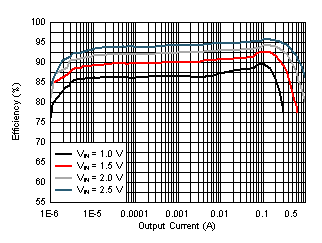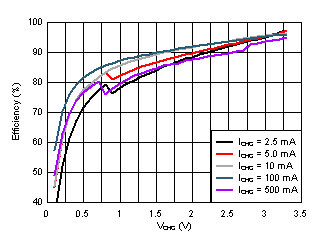SLVAF41A March 2021 – November 2021 TPS61094
6.2 Efficiency
The Figure 6-5 is the 3.3-V Vout efficiency graph in boost operation. The efficiency is about 93 % at Vin=2 V Vout=3.3 V Iout=250mA.
 Figure 6-5 3.3-V Vout efficiency in
boost operation
Figure 6-5 3.3-V Vout efficiency in
boost operationThe Figure 6-6 is the 3.6-V Vin efficiency graph in buck operation. The efficiency is about 88 % at Vin=3.6 V VCHG=2 V ICHG=2.5 mA.
 Figure 6-6 3.6 V Input efficiency in
buck operation
Figure 6-6 3.6 V Input efficiency in
buck operation